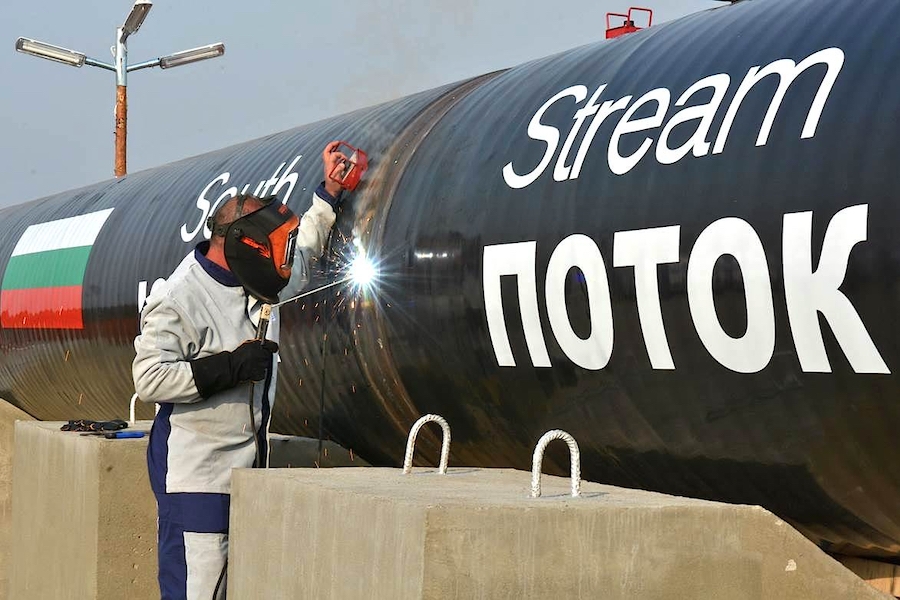
South Stream Pipeline: Chronicle of a Death Foretold
The reason behind the Russian failure to pursue the South Stream, a pipeline that would have brought Russian gas to Europe through the Black Sea, Bulgaria, Serbia, Slovenia, Hungary, and further to Austria, may be less straightforward than what it seems to be.
According to Putin, Russia has dropped the project because of the European Union sanctions which removed the support of the European banks and EU technical cooperation and were considered politically unacceptable by Russia, materially hampered the realization of the project. Russia cannot afford to build the pipeline, especially considering that some key transit countries like Bulgaria still have to give their consent. The red light to South Stream comes after the ruble’s dramatic depreciation since the beginning of 2014 and the consistent fall in oil prices, which have affected the Russian economy that strongly relies on gas revenues. According to this scenario, Russia seems, therefore, to be put in a tight corner by a number of economic, political, and strategic factors that risk diminishing its bargaining power in the geopolitics of gas.
But when it comes to energy, nothing is as straightforward as it seems to be at a first glance, and what looks like a defeat may result in a long-term Russian victory.
First of all, the South Stream was an incredibly onerous project, about $24 billion for a pipeline that would have followed a complex route to bypass Ukraine, the most riotous transit country Russia has to cope with. The gas was destined mainly for southern European countries, as northern EU member states are supplied through the North Stream, the pipeline that brings Russian gas to Europe.
Both pipelines were planned after the first Russia-Ukraine gas crisis in 2006, as a solution to bring gas to Europe without transiting through Ukraine, but only the latter has been easily built thanks to the open support of some EU countries like Germany that have directly benefitted from its creation. On the contrary, reception to the South Stream has always been lukewarm. The pipeline seemed unnecessary considering that southern European countries are currently served by TAP, the pipeline that brings Azeri gas to Europe. And if it’s true that TAP is a small pipeline that cannot fulfill European gas needs, Europe has welcomed it as the first step to gas diversification, as the TAP route does not include Russian gas.
European sanctions were the last straw to persuade Russia to abandon the South Stream. What could have been the economic advantage of a project whose cost rose to a point where Russia could not afford to build it anymore? The answer is none. With its major oil company Rosneft financially exposed in China and severely hit by Western economic sanctions, Russia has no real interest in investing in a project that serves the EU market, a market that appears at best stagnant and definitely uninviting, considering the stiff gas competition from Norway, Qatar and potentially the US, Israel, and Mozambique by the end of the decade.
As the EU is already looking for alternative gas suppliers, Russia is simply repaying it with the same money by looking at different buyers. China is first on its list, as the recent gas agreements confirm, but also Turkey which is a growing economy and market. It is not a coincidence that Putin’s announcement on the fate of the South Stream was been made during his recent official visit to Ankara.
Another reason for the South Stream’s demise is purely geopolitical and it’s part of Putin’s maneuvers to get closer to Turkey. Ankara’s ambition is to become the role model and leader of a strategic region, the Middle East. After the controversial attempt to become an EU member state, Ankara has turned its back on its European ambition and has on the contrary accentuated its Arab roots to be accepted as the leading country in the region. Turkey’s relationship with Russia is not simply a political response to Western sanctions, but also a way for Russia to get closer to a country whose political weight may be essential to settle some thorny questions like the Nagorno-Karabakh and the Abkhazia conflict. Despite the different points of view on other questions like Syria and Crimea, Turkey has become a vital ally to Russia in the region and a potential pivotal commercial partner. Over the past few years, Turkey has become one of the major buyers of Russian wheat and Russia is increasing the import of Turkish goods into its food market.
More importantly, Turkey can become a strong energy partner for Russia, which is deepening its energy ties with Ankara in its attempt not only to find new markets but also to find new strategic allies in the gas puzzle. For this reason, Moscow is investing a lot in the Blue Stream pipeline, which would bring Russian gas to Turkey: in March 2014 the pipeline celebrated the circulation of its first 100 million cubic meters and Russia is planning to enlarge the circulation volume to 19 billion cubic meters.
The demise of the South Stream pipeline resulted from a lot of different reasons, including economic and political. Russian energy policy reveals a long-term vision that aims to make Russia economically less dependent on Europe and its market, and politically less isolated. If the two countries overcome their historical differences, the energy partnership with China has the potential to turn into a political and economic alliance that could consistently rebalance the geopolitics of power. On the same level, Turkey could become a strong partner in the Middle Eastern, crossroads of conflicts, tensions, and global threats.
The South Stream risked becoming an unproductive investment, which would have diverted resources Russia needs to invest in other projects and alliances. With Turkey on its side and China more open to discussing an overall long-term partnership, Russia will be more prepared to face its challenges. Strengthening its relationship with strategic actors is most likely a successful strategy.
